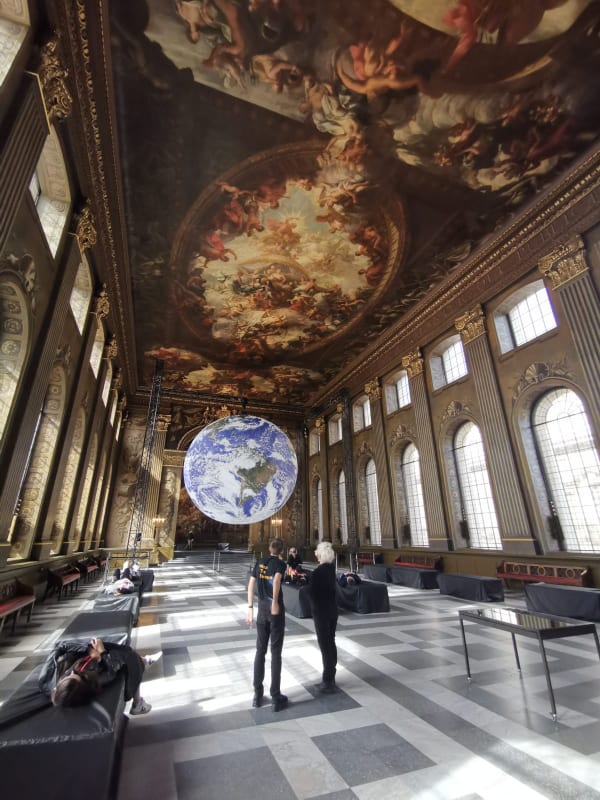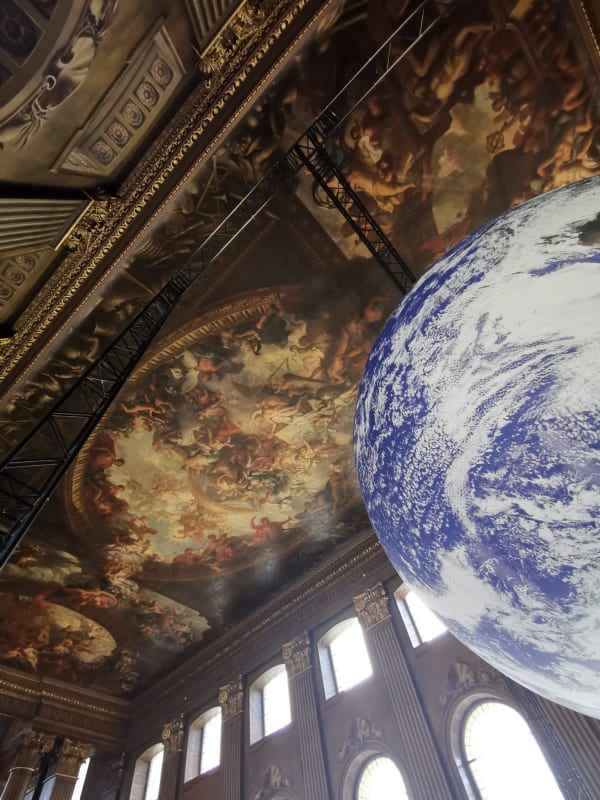Following months of work behind the scenes to adapt its programme to prioritise the safety of artists and audiences, Greenwich+Docklands International Festival has delivered a stunning collection of installations, site-responsive theatre and dance in the UK’s first full festival to take place since lockdown began in March. And it’s not over yet. Here are your plans for the weekend…
Before it transfers to Gloucester Cathedral, touring artwork Gaia by Bristol-based artist Luke Jerram – known worldwide for his large-scale public artworks – will be available to see in all its seven-metre splendour in the Painted Hall of the Old Royal Naval College until Sunday, 6 September.
Featuring highly detailed (120dpi) NASA imagery of the Earth’s surface, Gaia gives you the opportunity to see our planet in all its glory, floating in three-dimensions – as if you were in space and had grown up to be that astronaut you always wanted to be.
Unlike the Moon, which we’ve been able to gaze at for millennia, the first time we were able to see the Earth in its entirety was in 1972 with NASA’s Apollo 17 mission. At 1.8 million times smaller than the real Earth, the artwork also appears as it would if you were seeing it from the Moon when you stand 211m away from it.
Luke Jerram says: “I hope visitors to Gaia get to see the Earth as if from space; an incredibly beautiful and precious place. An ecosystem we urgently need to look after – our only home.
"Halfway through the Earth’s sixth mass extinction event, we urgently need to wake up, and change our behaviour. We need to quickly make the changes necessary, to prevent run away Climate Change. There really is no Planet B!
“I was amazed and delighted that my Museum of the Moon artwork has been so popular. I’m fully aware that three million members of the public haven’t been coming to see an artwork by ‘Luke Jerram’ but rather ‘the Moon’; an object of universal appeal and cultural significance. With this Gaia Earth artwork, I’m interested in just how different the experience and interpretation is. For our entire human existence, we have been gazing up at the moon and projecting all our hopes, dreams and wishes up there. Whereas it was only in 1968 that we were able to see our planet floating in space.”
A specially made surround sound composition by BAFTA award-winning composer Dan Jones will be played alongside the sculpture.
* All images taken by Eden Morse, www.edenmorse.co.uk.

